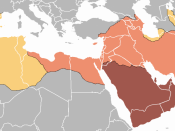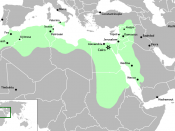Every day, all over the world, billions of people strive to embody the legacies of two of histories most influential men; Jesus Christ and the Prophet Muhammad. The death of these prominent religious leaders was devastating to their respective groups of followers, leaving them in the dark and in dire need of leadership, resulting in the formation of two very similar yet profoundly different institutions known as the Church and the Caliphate, respectively. Without divine leadership, and as each grew almost exponentially in size, both religions suffered from division and widespread disunity among the ever-increasing numbers of sects, each applying different interpretations on various aspects of faith. In Christianity, the Roman Catholic Church is the longest standing and most visible symbol of the Christian faith, while in Islam; the Sunni majority and the major (or most accepted as legitimate) dynasties of the Caliphate will be explored. Essentially parallel in purpose, not only have both of these institutions attempted to embody and eternalize the legacies of their founders, but have also played monumental roles in the development of human history; each of which has in its time, controlled vast empires wielding both military and economic dominance.
While in their earlier stages with smaller populations, it may have been appropriate for the community to have one 'multi-purpose' leader, it has become necessary to separate the fields of politics and faith as religious communities rapidly expanded and grew in power. This separation of church (in this context referring to any religious institution) and state has, over time resulted in gradual diminishing of the authority of both the Roman Catholic Church and the Sunni Caliphate. Stemming from corruption of authority, historical developments, and gradual deviation from founding principals, the decline of both of these institutions is seen in today's contexts as 'modernization', but...


